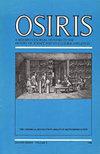沉降器计算
IF 1
3区 哲学
Q2 HISTORY & PHILOSOPHY OF SCIENCE
引用次数: 0
摘要
本文将美国西南部水资源管理的优化算法与1950–1990年期间的公平分配和预先拨款水资源政策联系起来。我认为,定量水法和算法水管理是共同的历史过程,因为它们源于定居者殖民空间和时间的相同公式——我称之为定居者计算。定居者计算阐明了定居者盗窃土著自然资源的行为是如何在数据驱动的资源管理项目中正式化的。我通过反思由垦务局领导的一个名为犹他州中部项目(CUP)的重大水利规划项目来讲述这段历史,该项目于1956年正式颁布。在CUP的开发过程中,当技术开发商侵占Uintah和Ouray保留地的Ute印第安人部落的水和土地时,这种侵占同时被编码在线性优化框架中。本文章由计算机程序翻译,如有差异,请以英文原文为准。
Settler Computing
This article links optimization algorithms in US southwestern water management to equitable apportionment and prior appropriation water policies in the 1950–1990 period. I argue that quantitative water law and algorithmic water management are coconstitutive historical processes, as they derive from the same formulation of settler colonial space and time—a practice I call settler computing. Settler computing clarifies how the settler theft of Indigenous natural resources is formalized within projects of data-driven resource management. I engage this history by reflecting on a major water planning project led by the Bureau of Reclamation called the Central Utah Project (CUP), which was formally enacted in 1956. When tech developers appropriated the Ute Indian Tribe of the Uintah and Ouray Reservation’s water and land during the development of CUP, this appropriation was simultaneously encoded in linear optimization frameworks.
求助全文
通过发布文献求助,成功后即可免费获取论文全文。
去求助
来源期刊

Osiris
管理科学-科学史与科学哲学
CiteScore
1.10
自引率
0.00%
发文量
18
审稿时长
>12 weeks
期刊介绍:
Founded in 1936 by George Sarton, and relaunched by the History of Science Society in 1985, Osiris is an annual thematic journal that highlights research on significant themes in the history of science. Recent volumes have included Scientific Masculinities, History of Science and the Emotions, and Data Histories.
 求助内容:
求助内容: 应助结果提醒方式:
应助结果提醒方式:


